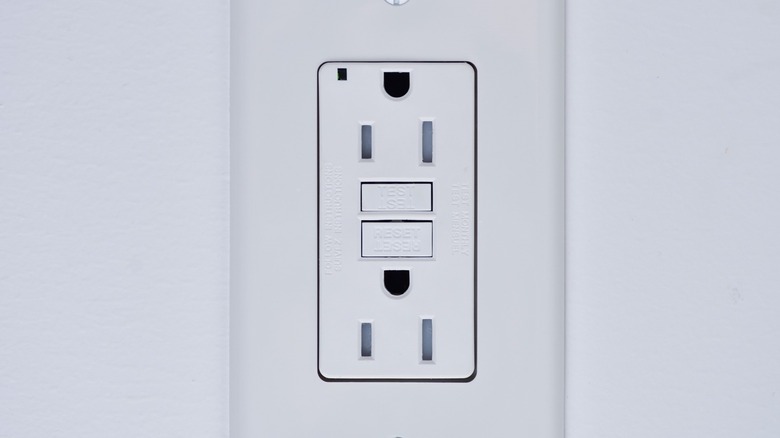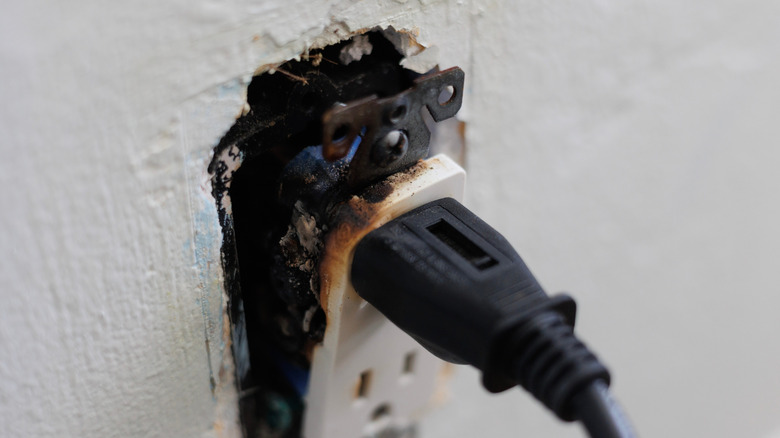Why Are Some Outlets Installed Upside Down?
We may receive a commission on purchases made from links.
Sometimes there are funky elements in your home that can make you scratch your head and question the thought process behind them. Maybe you can't open your closet and bedroom doors at the same time, or perhaps it's an oddly placed bathroom that opens onto the living room. While those instances may be due to a flaw in the design of your home, that's not necessarily the case with another seemingly strange home feature: an upside-down electrical outlet.
In North America, a newly built home typically has outlets with three holes. Of the two vertical slots, one is for the hot prong and one is for the neutral prong. The half-oval-shaped hole below (or in some cases, above) the two vertical slots is for the grounding prong. This is a safety feature that not only protects your devices from electrical malfunctions but can also protect you from being electrocuted. Two-prong outlets lack this safety feature and may be a hidden fire hazard in your house. If you live in an older home and your outlets don't have a grounding hole, you may want to consider swapping your two-prong outlets for ones with three prongs.
The grounding hole is most commonly below the two vertical slots. However, in many instances, one outlet in a room might be upside down, with the grounding hole facing up. While this may seem like a mistake, it's intentionally done by electricians for your own convenience. On the other hand, if all the outlets in your home are upside down, they may have been installed that way for safety reasons.
Upside-down electrical outlets are intentional
The most likely reason why one electrical outlet in your room is upside down while the others aren't is to specify which outlet is wired to the power switch in the room. While this isn't required, it is a standard practice for many electricians. Keep in mind, although the grounding hole facing up indicates that the outlet is switch controlled, likely only one of the two outlet plugs is wired to the switch. To figure out which one is switch controlled, test it out with a lamp.
So, one upside-down outlet indicates it's wired to a switch. But what if all of your outlets have the grounding hole on top? There's an explanation for that too: Electrical outlets with the grounding hole on top are considered safer. For example, if a power cord to an electric device is improperly plugged in and a hot prong is exposed, then a piece of metal like a fork falling and landing on it could result in a short circuit. If the grounding prong is at the top, the hope is that the object will bounce off without hitting a live prong. Even if this is not an entirely foolproof system, it's enough of a security measure that it has become the norm to install upside-down outlets in hospitals, and it's definitely something to keep in mind when it's time to update your home's electrical outlets.

